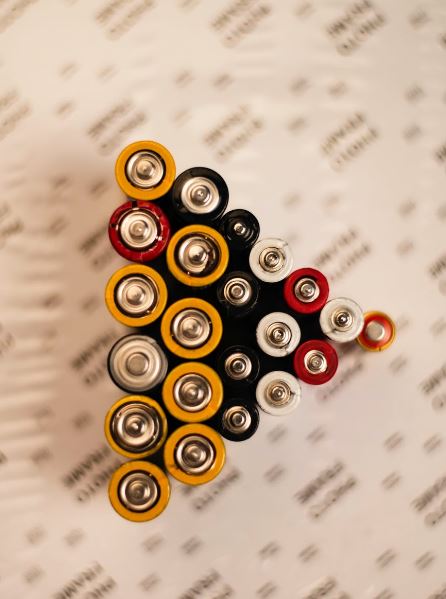Most of us probably heard the old wives’ tale that keeping batteries in the freezer can help them last longer. But then again, with the technology that we have today, such as reliable power supply and power banks, it seems that we have never looked for different ways to extend the life of AA batteries. But when worse comes to worst, we’re forced to be ready in case we lose battery charge or there’s no charger available. That is why it’s essential to know some hacks to help extend the life of batteries. In this article, we are going to know if putting batteries in the freezer can really help recharge them.
How Do Batteries Work?
Alkaline batteries or the basic AA batteries in the market are made up of three major components: the fuel or the electrolyte, the positive charge material, also known as the cathode, and the negatively charged material called the anode.
In order for a battery to work, the fuel has to react with the anode material to create electrons. When the battery is plugged into a circuit, the electrons flow through the wires from the anode terminal all the way to the cathode terminal, thus creating electricity.
When it comes to AA batteries, the anode material is usually a zinc compound, while the cathode is a manganese dioxide compound. The electrolyte is a liquid or pastes that has potassium hydroxide and a little bit of water.
Batteries are designed in a way that the electrolyte and zinc are in contact with one another, but they are physically separated from the manganese dioxide. The electrolyte and zinc continuously go under an oxidation reaction in order to create negatively-charged electrons. These electrons meet on a collection pin connected to the battery’s negative terminal.
As we mentioned, the electrons are negatively-charged, which is why they are attracted to positively-charged material, which is the manganese dioxide that is located on the positive side of the battery. That is why when you put a battery into a device, and the circuit will allow the electrons to flow through the device’s circuit to reach the positive end of the battery. This constant flow of attracted electrons from the negative to the positive end of the battery is what powers our cameras, phones, remote controls, and other devices.
So, What Would Refrigerating Batteries Do?
Throughout the chemical reactions that we mentioned, the electrolyte provides fuel for the zinc oxidation reaction and provides a pathway so that the electrons can move from the zinc to the collection pin.
Basically, the electrolyte substance contains water, and as we all know, water can be frozen. That is why when you put batteries in the refrigerator, and you are slowing down the electrolyte’s job as a medium through which the electrons move from the zinc/electrolyte mixture to the collection pin.
When the battery is not plugged in a device, the electrons are still being generated, and this process is called “self-discharge.” That is why most batteries have expiration dates because they can self-discharge to the point that they are no longer usable, but do not worry. After all, this process usually takes years.
Putting batteries in the refrigerator is an excellent way to help reduce the battery’s self-discharge process. But keep in mind that this trick will only slow down the process and will not stop the battery’s self-discharge altogether.
However, while refrigerating a battery can help elongate its lifespan when it’s not in use, keep in mind that it will be a little bit difficult for a battery to generate a flow of electricity if you use it in cold temperatures.
When you use batteries in cold temperatures, you will inhibit their ability to transport electrons, which decreases the actual voltage that the batteries can give. That is why your device may not work as well as you expected. Batteries are like humans; they function correctly at room temperature.
On the other hand, exposing batteries to hot and cold temperatures may cause battery failure because the constant contraction and expansion of the components inside the battery can break the seal and result in leakage.
Interesting Facts About Batteries
- In 1798, Alessandro Volta created the world’s first battery.
- According to EPA estimates, Americans use at least 3 billion batteries every year.
- In 1859, the first rechargeable battery, the lead-acid cell, was created by a French physicist named Gaston Plante. Lead-acid cell batteries are still used in cars today, and they helped pave the way to the invention of the NiMH, lithium-ion batteries, as well as other types of rechargeable batteries that we use today.
- The expiration date written on the box of batteries does not mean that they can no longer be used. It just means that the batteries may start losing some of their efficiency during that time, but it still has a lot of power in it.
- The first small or miniature batteries were introduced in the market by Eveready in 1950. This changed how people wound and wore their watches.
- You can make a battery using potatoes; however, it’s not powerful enough to light a LED flashlight.
- In 1802, William Cruickshank invented the first electric battery that could be effectively mass-produced. That meant the general public started having access to batteries.

